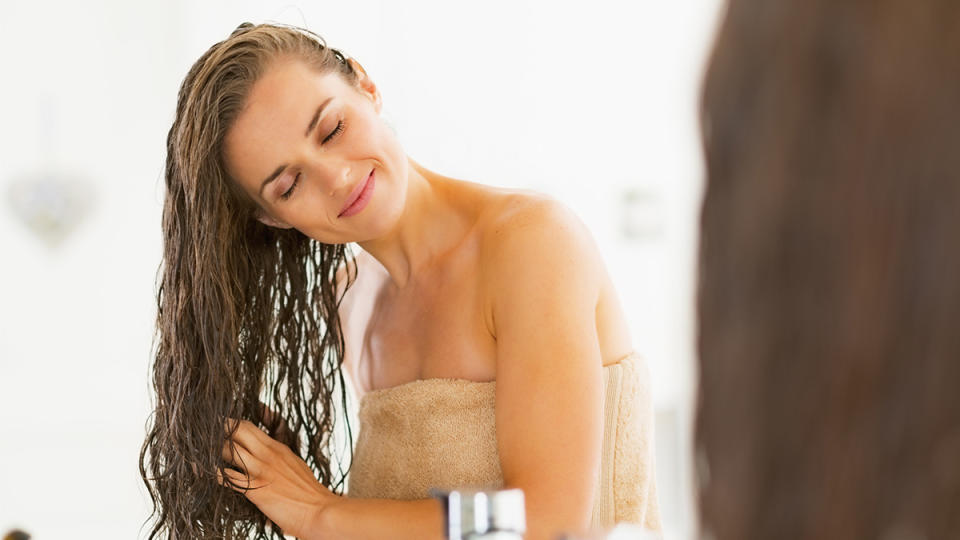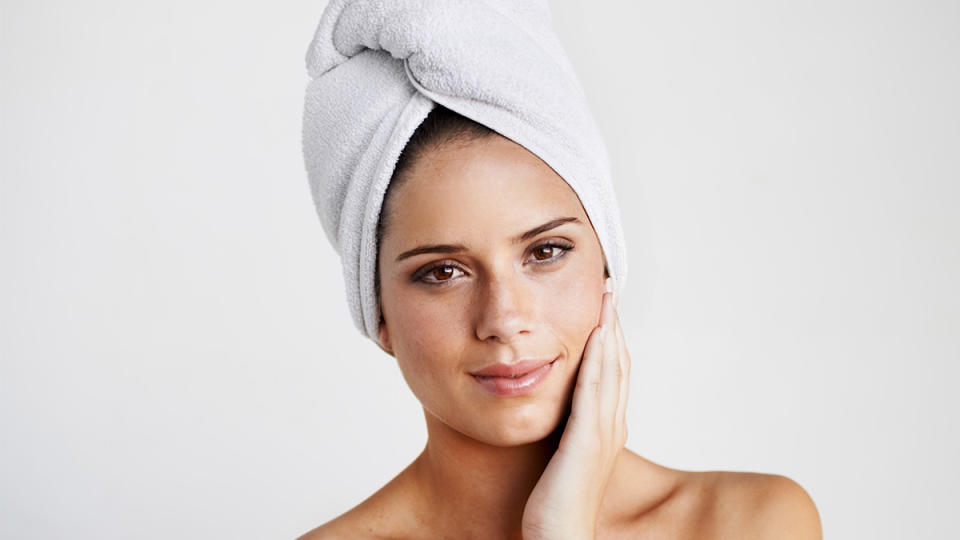Hair Pros Share How to Air Dry Hair the Right Way So Strands Look Thick and Stay Healthy
There's been a long debate over whether air drying hair is better for our strands than using a blow dryer. And according to hair experts, the answer is that one isn't always better than the other. Instead, it's best to pick the drying technique that's best for your specific hair type. Below you'll learn just that and the steps for how to air dry hair so your locks look great and feel great.
Is air drying hair better than blow drying?
Perhaps somewhat surprisingly, the answer to "is air drying better than blow drying?” isn’t a simple or resounding yes — at least, not for everyone’s mane. “To keep the optimal integrity, elasticity and strength for beautiful hair, the best drying approach — to air dry or blow dry — will depend on several factors,” says Bridgette Hill, a certified trichologist who consults for René Furterer. What it comes down to, she says, is a combination of your natural hair texture, your styling goals, the condition of your hair fibers, your lifestyle and the health of your scalp.
Related: Is Blow Drying Hair Bad? Experts Reveal the Pros and Cons — Plus How to Prevent Damage
What hair types work best for air drying hair?

Those who might want to stick to air drying include anyone whose texture is tightly coiled to loosely waved and wears that natural texture — and has the appropriate time to fully air dry from roots to end. Hill also suggests those with chemically-straightened hair should air dry before using any heat on hair to maintain their sleek style. Finally, if your scalp condition and texture requires frequent cleansing or your scalp becomes oil easily, you might also benefit from air drying when possible.
What hair types work best for blow drying hair?
On the other hand, blow drying can actually be best for certain hair types, including those who color their hair and have extensions — but with a few caveats. “Generally, highly processed [hair with] hair extensions have weakened bonds as a result of the overlapping of chemicals and adhesive, which impact the hair even when performed by the best,” says Hill. “This type of hair should be professionally maintained with a proper blow dry and hair treatment ritual.” And if your scalp health and hair texture allow for extended time between shampoos and blow drying, you can also benefit from blowing out your hair every few days.
If you have dandruff, dermatitis, another scalp condition or really dense hair, your head of hair might be served best by a mix of blow drying and air drying. “Any dermatitis or unwanted scalp condition does not want to have excess moisture on the scalp trapped between hair fibers," says Hill. "This can lead to conditions that encourage bacterial and fungal growth."
So blow drying at a safe temperature and setting could be a viable option to prevent this, or, you might just dry the roots in certain cases. “If hair texture performance is best when air-dried, ensure the hair dries 100% at the root," advises Hill. "Or use low level temperature and force, like a low-speed setting to ensure the scalp and hair are completely dry.”
The pros of air drying hair
1. Pro of air drying hair: It avoids heat damage
One of the biggest benefits of air drying is that it can be gentler, allowing you to avoid the potential heat damage that improper blow drying can cause.
2. Pro of air drying hair: There's no styling time + it enhances hair's natural texture
Air drying doesn’t require quite as much active styling time either and can encourage embracing a more au naturale look. And Laura Polko, celebrity stylist and Conair ambassador says, that air drying can showcase your natural texture more than blow drying.
The cons of air drying hair
1. Con of air drying hair: Hair can still become damaged
Even though the process of air drying seems obvious, it can still be done improperly, which can cause damage. “There are many ways to incorrectly air dry your hair and doing so leads to frizz, damage and breakage,” says Polko. “One mistake is not soaking up excess water before letting your hair air dry. Since wet hair is prone to breakage, I recommend using a microfiber towel to scrunch up that additional water.”
In fact, a study from Yonsei University in South Korea reports that it’s possible that the hair’s cell membrane can get damaged due to prolonged contact with water.
2. Con of air drying hair: It takes longer for hair to become fully dry
In general, Polko says air drying takes longer than blow drying. This is especially true for those with thick hair as it can take hours for hair to fully air dry.
3. Con of air drying hair: It can make hair look limp
Lastly, air drying isn’t as conducive to volume boosting. But there are some tricks you can employ to get a little extra lift that you'll read below.
How to air dry hair
Air drying hair isn’t just getting out of the shower and waiting patiently for your tresses to be bone dry without doing anything at all. Keep scrolling for the best way to air dry your hair.

Step 1: Get rid of excess moisture in hair
Once you’ve cleansed, conditioned and rinsed your hair, kick off the air drying process by gently squeezing the water out of your hair, then wrap it in a microfiber towel to remove excess moisture. “The microfiber towel is great if you’re air drying because the material is so soft and won’t toughen up the cuticle,” says Sophie Gutterman, a celebrity stylist who consults with EDRéE hair styling tools and All About Curls. Tip: A cotton T-shirt can also be used in place of a microfiber towel since it's equally soft and absorbent.
Step 2: Apply a styling product based on your hair type
At this point, you can apply the appropriate product for your desired style. “Every hair texture, even the finest of hair textures, will require some type of product to be incorporated into the air drying experience,” says Hill. So you’ll want to see what your hair responds to best and take your environment into account too.
Moisturizing products and/or heat protectants can be ideal, the latter even so if you’re not using heat but for the frizz-fighting benefits and ingredients. “Everyone's hair takes product differently, so depending on your preference you can apply products straight out of the shower or somewhere toward the middle of your dry routine, says Polko. "But I would avoid adding at the end unless it's a spray."
Bonus? If you have wavy or curly hair and want some extra volume at the root while it’s drying, Gutterman suggests flipping your hair upside down and scrunching it for a little body boost.
Step 3: Speed dry time with light blow drying
“Air drying works best on damp hair,” says Polko, and you might get the best results by marrying this technique with a little bit of blow drying. “To speed things up, air dry for 30 minutes and then use a blow dryer to finish,” she says.
Bonus: Things to avoid when air drying hair
Other watch outs include avoiding air drying your hair in the sun, which can dry your hair out and cause more frizz. And it's best to not use and elastic ties or clips when your hair is wet. “This can lead to breakage,” says Polko, and can also cause creasing in the hair that you then might need to correct with heat styling.
To learn more on how to air dry hair, watch the below video from hairstylist and YouTuber @BradMondo.
For more hair care tips, click through these stories:
Is Dry Shampoo Bad for Hair? Experts Weigh In + How to Pick the Best One for You
Hair Color Wax Is the Trendy Way to Get Bold Color Without Actual Dye — How to Use It
Can Flaxseed Gel Reverse Thinning? Hair Restoration Doctor Weighs In
